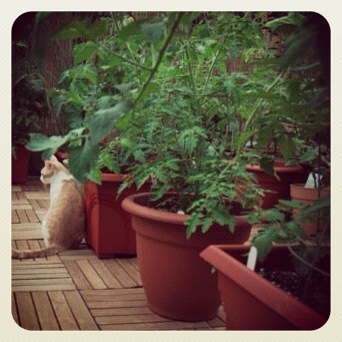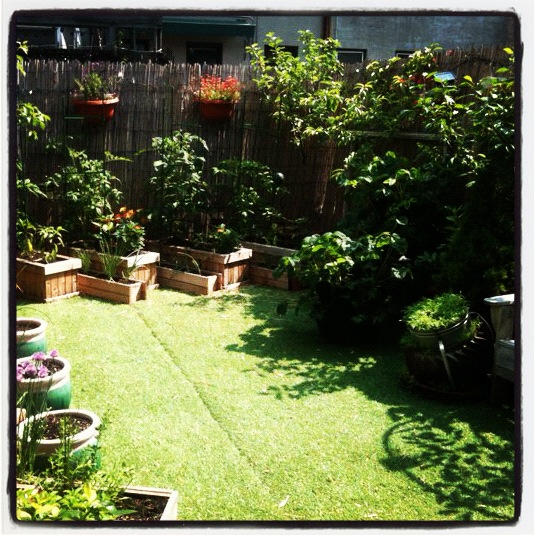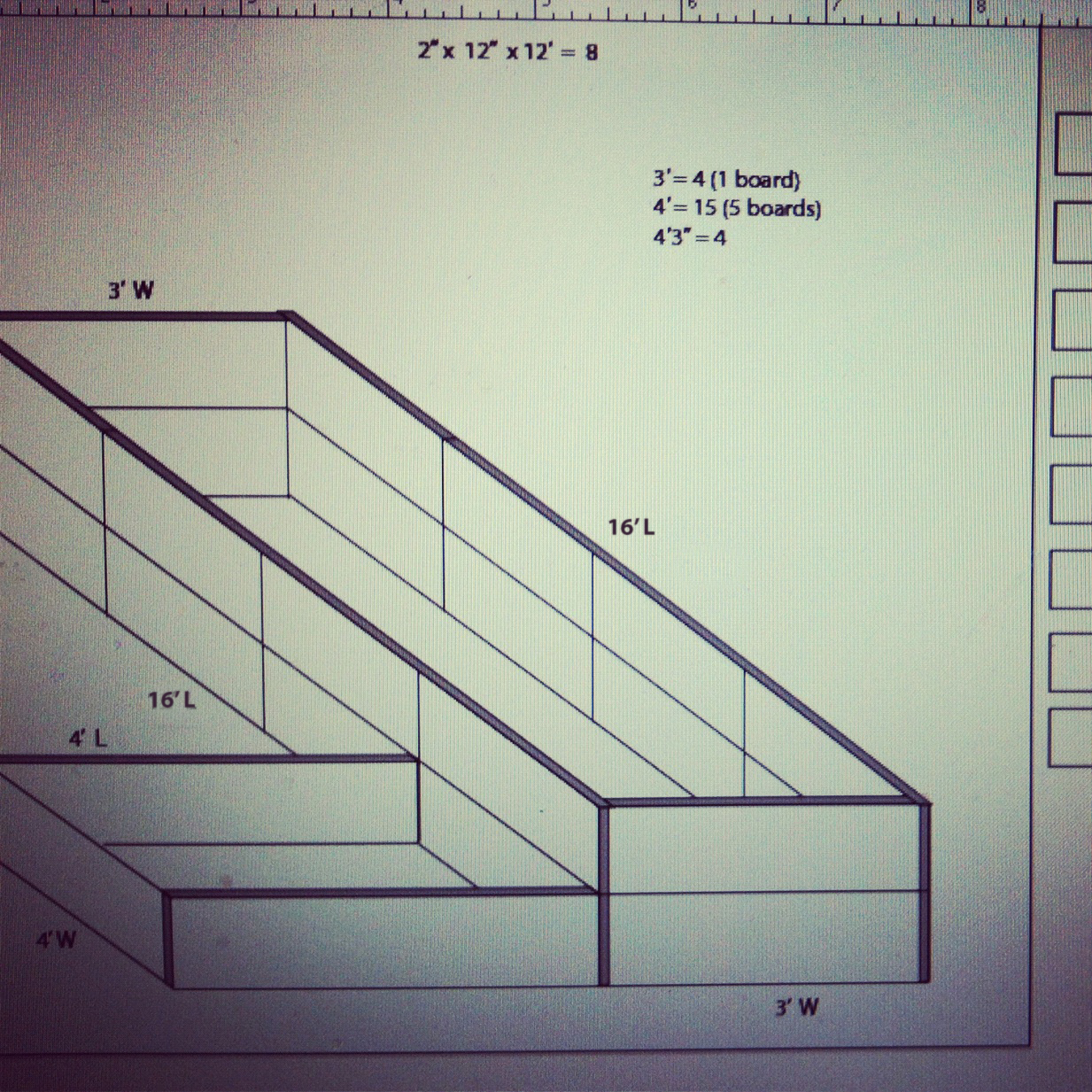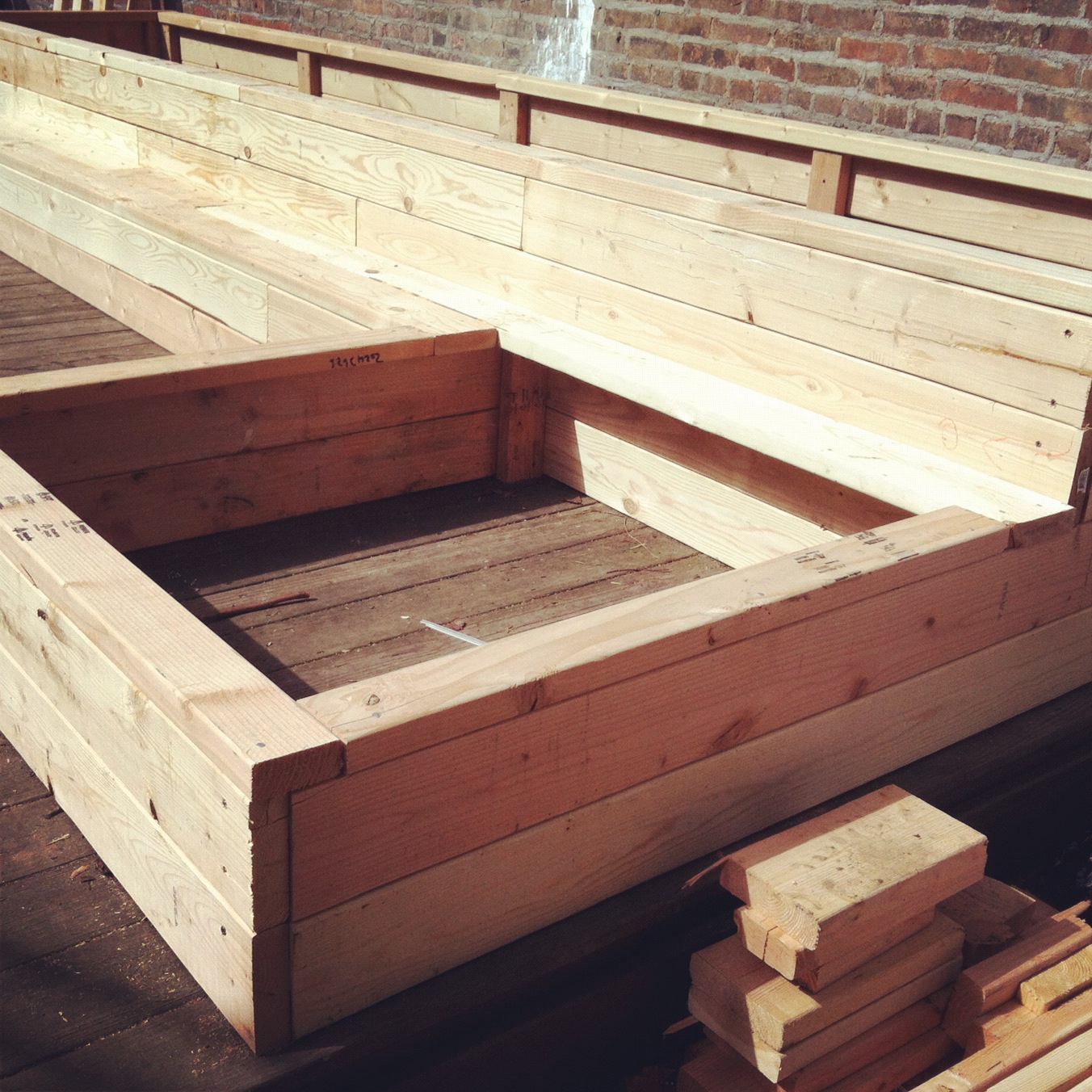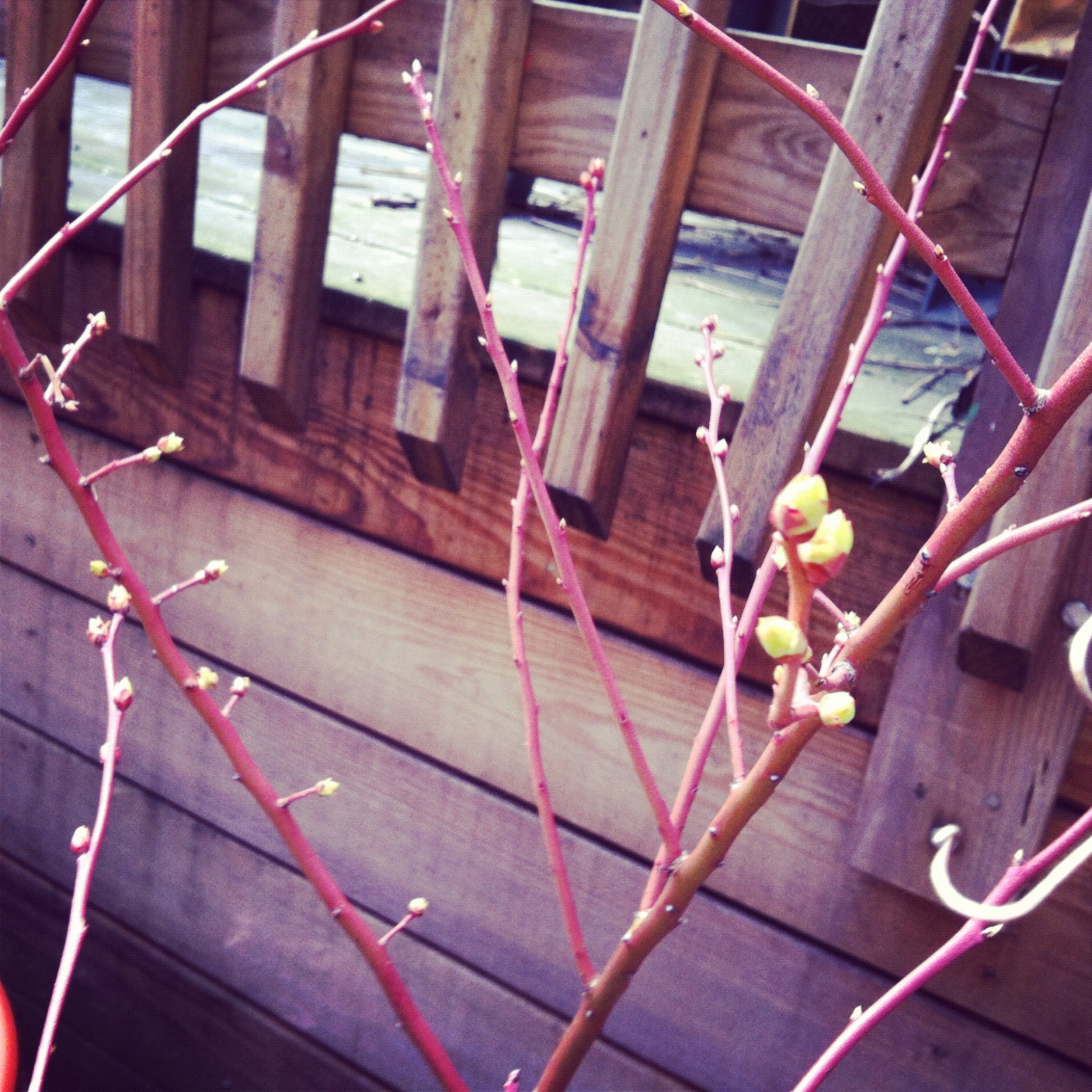
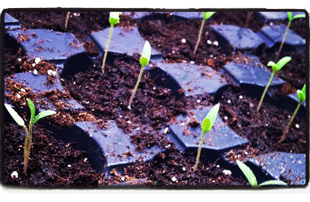
As far as I'm concerned, successful gardening begins with the two Ps: patience and planning. When I started out, I had none of the first one and resisted the second one like the plague. I was the mental equivalent of an ogre, wanting to grab perfect seedlings from nurseries with my big meat hands, shove them in the ground with brute force and immediately see fruit form before my big, stupid eyes.

The author, circa 2009.
The poor planning was evident by late July that first year; our fourth floor roof deck was a maze of messy, unpruned vegetation that was more enthusiastic than it was productive. Hastily purchased plastic containers covered almost every square foot and it looked downright precarious. How much weight can a brownstone roof hold anyway?
Our first garden didn't leave a lot of room for cats.
My lack of patience was evident as well. When I planted out tomato seedlings in mid-April I expected to have armloads of full-size Brandywines no later than late mid-April. I left to visit my family in Alabama at the beginning of July and was frustrated to only have a few cherry tomatoes and two jalapenos to take with me. How was I going to brag about my newfound green thumbery with such a puny bounty?
Getting dejected early on in the season means you stop doing all the things you need to do to make your garden work. Watering gets sporadic, fertilizing goes out the window, "pruning" becomes a made-up word, and those beans you were so excited about will probably give you gas anyway so you decide to just let them wither on the vine.
At the end of that first year I was sick of even thinking about gardening, much less doing the actual work of gardening. I wondered if my initial enthusiasm would return or if it would prove to be a passing phase, like learning to play bass and "really getting into wine".
But by January, something miraculous happened: seed catalogs showed up in my mailbox. It was as if a divine power were saying to me, "It's cold as hell outside and you're just watching 'Twin Peaks' for the 800th time. Why don't you occupy your mind with something productive?"
So we began planning. Every January, when we were holed up inside anyway, we'd start talking about the deck layout, picking seeds, ordering supplies. I have a bit of an annoying laser focus when I'm working on something, which actually turned out to be a positive when it came to the garden. I didn't mind spending hours researching companion planting options, figuring how to discourage slugs with copper or making a lacewing house out of a soda bottle. And over the next couple of years, our roof garden became more orderly, attractive and productive, and we, in turn, got better at taking care of it.
Much more organized, and our pets loved the fake grass.
The key to overcoming my impatience, on the other hand, turned out to be even simpler: flowers. I had initially thought of growing flowers as the agricultural equivalent of joining a knitting circle, but by adding them to our gardening plan we were able to have a constant supply of something interesting to look at, even when there was no food to harvest.
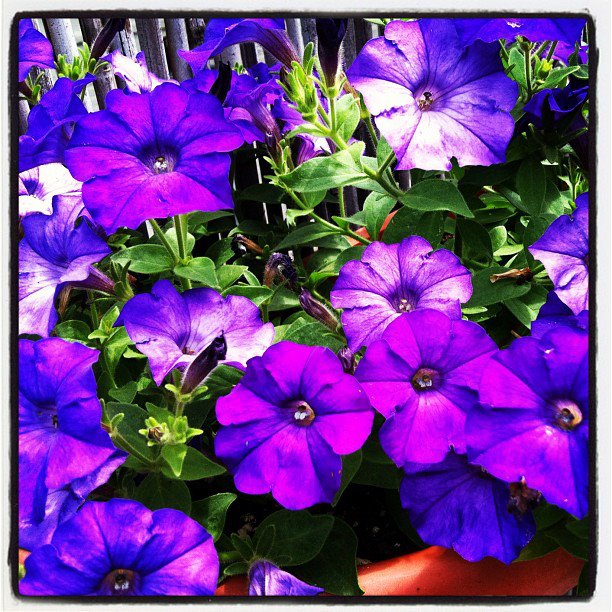
Petunias are the Russell Crowes of the garden. ARE YOU NOT ENTERTAINED?
Now that we're starting an entirely new garden in a new space, my relentless, House-like desire to solve planting puzzles has gone into overdrive.
Being on the ground floor with no more weight concerns, I set about coming up with a design for a large, companion-planted container. First, I needed to figure out how to build it and what to fill it with.
One of the problems with container gardening on a large scale is soil. You can't use regular topsoil because it will quickly compact and choke the roots of your plants, which is why potting soil exists. But potting soil is actually not soil at all, rather it's a mix of peat or coir along with some drainage material and other amendments. It's great for your container plants in the short term, but it loses its nutrients quickly and you're ideally supposed to replace it with fresh potting soil each year. For my purposes, replacing potting soil every year is both wasteful and cost prohibitive.
Over the last few years, I've experimented with pouring boiling water into my containers at the end of the season (to kill any disease or other unhelpful organisms leftover from that year's plants) and then amending with compost and some new soil the next year, but it never seemed like the plants were getting the nutrients they needed.
Since this new planter was going to be a big initial investment and the focal point of our redesigned garden, I wanted to give it the best possible start. But what would that be?
As it turns out, if you're an aspiring gardener, your best friends are other gardeners. I got some invaluable advice from two different sources. First, I emailed the folks at Brooklyn Grange, a giant rooftop urban farm here in NYC. They're setup is certainly different from mine, but they don't garden in the ground and they can't possibly replace all their soil each year so I thought it was close enough.
Gwen from Brooklyn Grange got right back to me and recommended I use as much compost as I can get my hands on with a little something mixed in for drainage, such as coir. Makes perfect sense. Compost is the best thing you can give your plants anyway, so why not grow them in it? Plus, once I get my composter started this year, it'll be easy to amend without spending a dime.
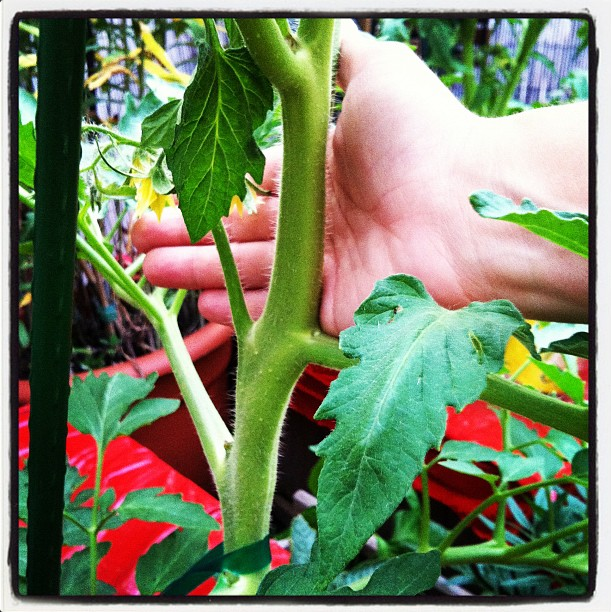
Much like Steven Seagal, plants nurtured on compost are hard to kill (but we try anyway).
I sent my next email to Richfield Farms & Garden Center in Clifton, NJ, where I bought our Big Green Egg a few years ago (as a southerner, I wasn't about to have an outdoor space without a smoker). I recalled from that visit, that Richfield carried large bags of rich compost.
After emailing back and forth about my planter and specific plans with Jessica at Richfield, not only did she give me a fair price on a huge order, she made some more detailed recommendations. Yes, I wanted mostly compost, she said, but she also recommended mixing in some Bumper Crop by Coast of Maine, as well as a few inches of garden stone in the bottom of the planter for drainage. Bingo. That sounded perfect.
But before we could order the soil, we needed the actual container. And for that, we needed our roommate Corey and his mad building expertise. Given that he built a bar in our apartment, I thought a glorified box would be pretty simple.
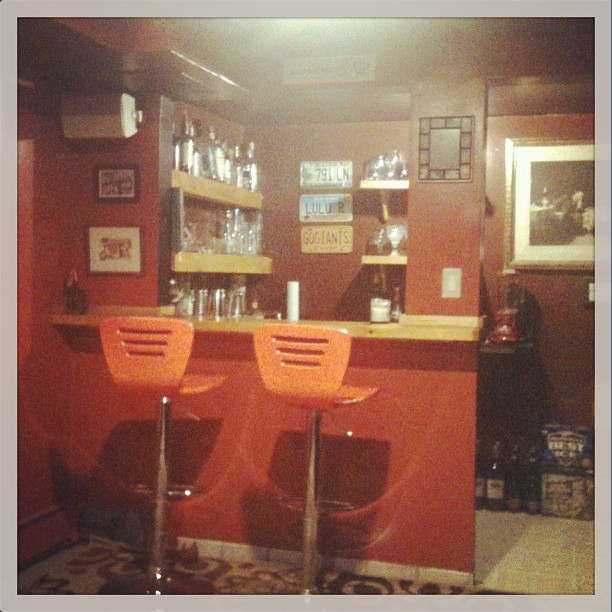
Our in-house bar/confessional. Instagram by FakeRockstar.
I designed a two level, L-shaped planter based on various photos from my gardening books. It would have a smaller 4' x 4' x 1' section for onions, carrots, radishes, etc. and larger 16' x 3' x 2' section for everything else. After researching our options, we chose Douglas Fir green-certified timber from Home Depot (cedar is ideal, but our nearest store didn't carry it).
Who hasn't spent a Saturday drawing a box in Illustrator?
Corey improved upon the design by going with 6" wide boards as opposed to the 12" ones I originally chose, building exactly what I wanted, but better.
If you don't live with a carpenter you don't know what you're missing.
So, we finally have a bigger boat. Moreover, we know what to fill it with. Now all we need is a planting plan. Fortunately, I have no problem spending a weekend in my pajamas coming up with something like this (click to enlarge):
Sweet plan, bro.
More to come on that next week.
One final note, our perennials are just beginning to wake up. Here's one of our blueberry bushes, already covered in buds.
Lookin' good, Billy Ray!
Previously:
Part 1: Seeds Of Doubt

